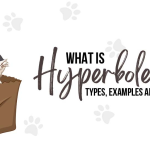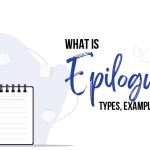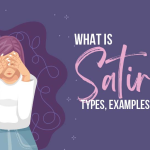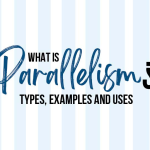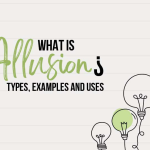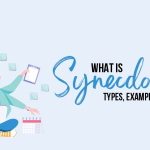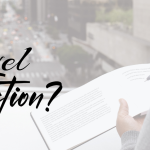Imagine a world where secrets are buried deep and the truth is hidden behind closed doors.
A prologue is like a key that unlocks the door to this hidden realm, revealing a glimpse of what lies ahead. It sets the stage for the journey that is to come, providing context and background that will help you navigate the twists and turns of the story.
Prologues can take many forms, from an introduction to the characters, to a look into the past that shapes the present. They can be written from a single point of view or from an omniscient narrator, giving you a bird’s-eye view of the world.
Think of a prologue as a map, guiding you through the unknown territories of a story. It may not be necessary for every tale, but when used correctly, it can enhance your understanding and appreciation of the journey ahead. So, open the door and step into the world of the prologue, and let the story unfold.
You may also read: How to Publish a Book? | Publish Your Book | BlueRoseOne
Many people have a doubt “What is Prologue“? Prologue comes from the Greek word –prólogos where ‘pró’ means before and ‘logos’ means word. A prologue is like the curtain raising before the main show, it serves as an introduction to the literary work, setting the scene for the story to unfold. It’s often placed at the beginning, like an overture, to give the audience a glimpse of what’s to come.
Now there are three terms used quite a lot Prologue, Preface, and Foreword. They all contain background information and set the story but What is the difference between the three?
A prologue is a section that is part of the main story and is used to provide background information, introduce characters or themes, or set the scene for the story that is about to unfold. It is written in the same style and tone as the rest of the book and is often used to provide important information that is needed to understand the story.
A preface, on the other hand, is typically written by the author and provides information about the context in which the book was written, the author’s inspiration for the story, or the research that was done to create the work. It is often written in a more personal tone and can give readers insight into the author’s creative process.
You may also like: The Mighty Red by Louise Erdrich: A Deep Dive into Her Latest Novel
A foreword, meanwhile, is usually written by someone other than the author, such as a literary critic, a historian, or a well-known public figure. It is intended to provide an endorsement or recommendation of the book and to give readers an idea of why the book is worth reading. It often provides an overview of the book’s themes and significance.
The main difference between these three is that a prologue is a part of the story, a preface is written by the author, and a foreword is written by someone else.
They all provide background information and context to the book, but they come from different perspectives.
You may also like: Imposter Syndrome for Authors: Steps to Overcome Imposter Syndrome
Now every writer writes a different story, every story needs a unique prologue. Therefore, using these tips to write a prologue will help to ensure that the prologue serves its intended purpose and enhances the overall story.
- Decide if a prologue is necessary: Not all stories need a prologue, so it’s important to determine if it’s an essential element of your story or if the information can be included in the main body of the text.
- Establish the tone and style of the story: A prologue should be written in the same tone and style as the rest of the story. It should also introduce the themes and mood that will be present throughout the story.
- Provide important background information: A prologue can be used to provide important information that is needed to understand the story. This can include details about the setting, characters, or events that have occurred before the main story begins.
- Hook the reader: The prologue should be written in a way that captures the reader’s attention and makes them want to read more. Use descriptive language and create a sense of mystery or intrigue to keep the reader engaged.
- Keep it short: A prologue should be brief and to the point. It should provide the necessary information without being too long or detailed.
- Practice, practice, practice: Like any other writing, practice makes perfect, so don’t be afraid to revise and rewrite your prologue until you feel confident in it.
- Lastly, always proofread and edit your prologue to make sure it is error-free and conveys the message you want to convey.
You may also like: Top 10 Real Life Stories to Read Online
Prologues, like the first sip of fine wine, are a tantalizing introduction to the literary feast that lies ahead. They come in many forms, each with a unique purpose, much like a wine list that offers a variety of options to suit different palates. So here is your wine list of Prologue –
- Explanatory prologues: An example of this type of prologue is the first chapter of J.R.R. Tolkien’s “The Lord of the Rings,” which provides a detailed history of the ring and its powers, setting the stage for the story to come.
- Character prologues: An example of this type of prologue is the opening chapter of Jane Austen’s “Pride and Prejudice,” which introduces the character of Mr. Bennet, who plays a significant role in the story.
- Flashforward prologues: An example of this type of prologue is the opening chapter of George R.R. Martin’s “A Game of Thrones,” which provides a glimpse into the future, foreshadowing the events that will unfold in the story.
- Framing prologues: An example of this type of prologue is the opening chapter of F. Scott Fitzgerald’s “The Great Gatsby,” which sets the scene, describing the “valley of ashes” and introducing the mysterious figure of Gatsby.
- Historical prologues: An example of this type of prologue is the opening chapter of Hilary Mantel’s “Wolf Hall,” which provides a detailed history of the Tudor period, setting the stage for the story of Thomas Cromwell’s rise to power.
- Author’s prologues: An example of this type of prologue is the opening chapter of Stephen King’s “The Stand,” which is written by the author, addressing the reader and providing context for the story.
You may also read: The Rise of Shakti By Megha Dinesh: Book Review
In conclusion, When writing a Prologue, it’s important to consider if it is necessary, establish the tone and style of the story, provide important background information, hook the reader, keep it short and practice, practice, practice. With these tips, a Prologue can enhance the overall story and serve its intended purpose.
Prologues can take many forms, from an introduction to the characters, to a look into the past that shapes the present.
They can be written from a single point of view or from an omniscient narrator, giving the reader a bird’s-eye view of the world. Think of a prologue as a map, guiding the reader through the unknown territories of a story.
You may also like: The Rise of Audiobooks: A Gamechanger for Modern Bookworms
Tell us your favourite prologue and till then…
Publish your book for free with BlueRoseONE and become a bestselling author. Don’t let your dream of becoming an author fade away, grab the opportunity now and publish your book – be it fiction, non fiction, poetry or more.
Happy Reading!








